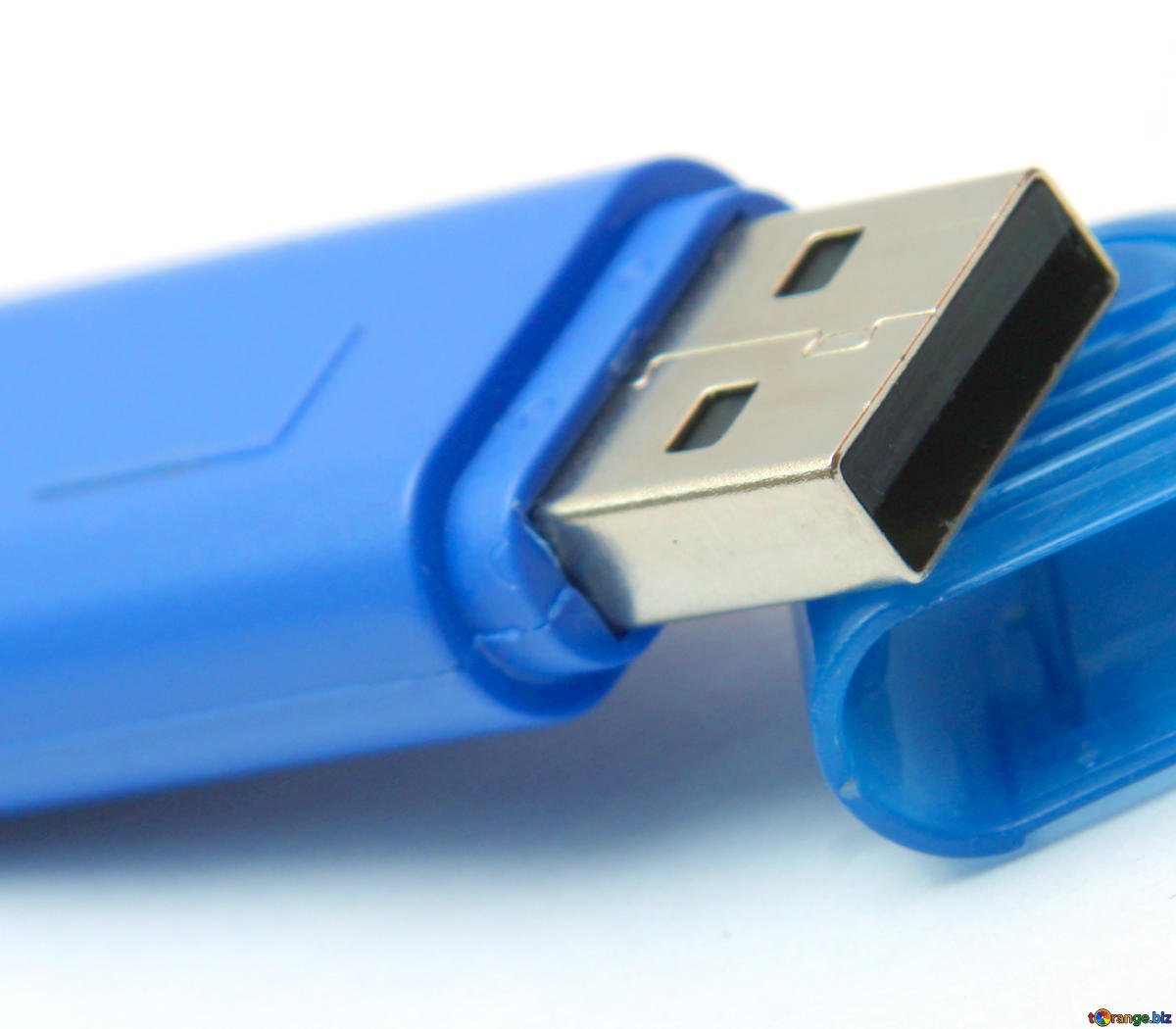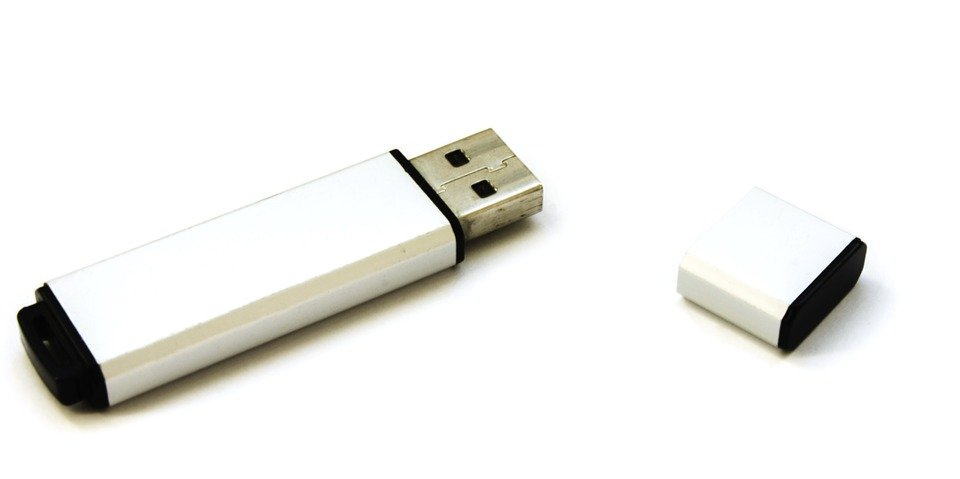1.Basics come first: what’s inside the Flash Drive?
The flash drive (or, how it is also called longer, a USB Flash drive) is a microchip that has no moving parts. The principle of its work is based on Flash TM technology that was elaborated by Intel in the 1980s, which core is the technology of electrical erasing and writing in no less than 1 million working cycles (1 cycle = 1 write + 1 erase). It is an electrically independent storage device.
It consists of:
- USB0/3.0 connector
- USB mass storage microcontroller device
- Flash memory chip (one-sided/double-sided for regular devices with up to 256 Gb memory or multiple-layered for devices with 1/2/4 Tb memory) – the analog of HDD
- 2 test points
- Crystal oscillator (to control the data output)
- LED indicator (to see when it’s working)
- Capacitor
- Resistor
- As usual, 20 pins (32 in the first models back in the 1990s) to connect the memory chip to the motherboard (of green or red color)
- Optional write-protect switch.
If it is not a mobile flash that weighs several grams but the one that is used as the internal Flash Hard Drive, then USB is replaced by Power and SATA connecting slots and it includes SSD controller, DRAM, and several Flash memory chips (from 4 to 16 or 32, depending on the volume).
Some manufacturers may equip it with additional features like Multimedia/SD card reader but, of course, it influences their shape and weight, the same as any outer hull modifications.
Looking deeper, inside the memory chip, it consists of several layers of semiconductors, copper or other material to connect billions of resistors and transistors (R&T). The entire thing is called die and is actually printed on the layer inside equipment-making factories. Each R&T is 22, 14, 10, 7 or 5 nanometers small (2012-2018 – the years of the beginning of manufacturing of each standard). This defines the volume that can be stored within the same weight and size. What is 5 nm? It is 5 billionth parts of 1 meter! Basically, the size of ten atoms of silicon. Just to compare: the human hair is 0.04-0.12 millimeter thick, which makes it 8,000-24,000 times thicker than any R&T!
2.Why USB Flash is cooler than CD, DVD, HDD, or Floppy

To start with, let’s characterize the Flash itself:
- it has no moving parts
- it does not require energy to store data
- it has a bulky temperature range to work within: -40…+85 °C
- it can be overwritten minimum 1 million cycles (which is usually equal to lifespan over 100 years)
- no acoustic noises during work
- it only takes power when working, not storing.
Also, despite many precautions about avoiding storing it under the sun, the real danger is triggered only when it is highly heated and largely cooled day by day – in this case, only a long enough cycle of thermal expansion and contraction may damage the device. Without such extremes, the lifespan is endless, practically limited to the decay and decomposition of the materials it is made of (thousands of years without rewrites).
Now, let’s see at the compared data carriers.
CD and DVD:
- only stores hundreds of Mb or several Gb of data
- if scratched, stops working properly or at all
- requires specific favorable conditions to store, no direct sunlight or moist (or data loss occurs only in months)
- has long and inconvenient recording process, needs separate software for that
- one-time blanks cannot be re-recorded or data added
Floppy:
No wonder it is called ‘floopy’ because it takes a cough of a butterfly to break it. Also, a magnetic field, moist, sunlight, even bread crunches – all lead to failure. Of course, not to mention its insanely low capacity.
HDD:
- Needs a lot of power to work, gets heated
- Hard to bring from one place to another and it’s not portable
- Has a lot of moving parts, which lower its speed of data recording and reading, lowers its life to tens of years, and any of its moving components can fail separately.
- Being touchy to t° changes, it works within the narrow range, +5… +40 °C or will break sooner if you go extreme.
The only HDD advantage for now over the Flash is the cost of 1 Gb stored.
3.How efficiently do they store?
Have you ever noticed that when you buy a new Flash or HDD drive, despite the fact that it is stated they have, for instance, 1 Tb of capacity, they actually embrace only 0.9…0.96 of that? The thing is that the memory can’t be utilized at 100%. Why? The simple answer is that they are designed in a way to have 1 Tb for real but some of it is always taken by the ‘technical sewers’ (as we call them) of must-have data you can’t see and can’t erase (even using the defragmentation or formatting).
So what that ‘technical sewer’ consists of? There are several points:
- Normally, 1 Kilobyte is 1024 bytes, the same as 1024 Kb is 1 Megabyte. But at first some, and later – almost all data storage device manufacturers have opted in for tricking customers by saying that 1 Kb = 1000 bytes, 1 Mb = 1000 Kb, and 1 Gb = 1000 Mb. So in order to avoid being more confused, in the late 1990s, the International Electro-technical Commission introduced new standards for IT capacities: ‘Kilo’ vs. ‘Kibi’, ‘Mega’ vs. ‘Mibi’ and so on. Kilo was 1024 when Kibi was 1000. Manufacturers continued to use Kb further meaning ‘Kibibyte’, when Apple, Microsoft, and Google operating systems still normally consider as it is right: 1 Kb is 1024. The same for others: Mb, Gb, Tb, and so on. In practice, this means that the marketed ‘1 Gb’ drive has 1,000,000,000 bytes when the true 1 GB should have had 1,099,511,627,776 bytes (240). So your PC defines the plugged-in device as one having not 1000 Gb but actually 900.5 Gb. (1000 Gb — 99.5 Gb). Voila.
- When plugged in, the operating system stores some data into it, like the technical files needed to run it, to see it, to work with it, define its file storage system (FAT32, NTFS, exFAT), create files’ dumps, record the operative data (instead of storing it on the PC in the RAM), and some stuff needed for quick self-testing. All this can take, let’s say, 5% from its volume.
- The specificity of recording and reading files. The engineers have designed all memory devices to be split into millions of tiny blocks to make sure the drives are evenly utilized. Thus, even one file can be stored on tens of different locations in the drive. In this case, the ‘sewer’ stores the data, needed to know, in which exactly locations every piece of the file is.
So, the actual volume of your 1 Tb drive can be like 850 Gb. How to avoid it? Check its real available space before buying it.
We hope that you find information in this article interesting and will come back to us soon! Have fun with your Flash drive 🙂
![[Jcount.com]](https://www.jcount.com/wp-content/uploads/2014/08/jcount150X50.png)
![[Jcount.com]](https://www.jcount.com/wp-content/uploads/2014/08/jcountstartupslogo1.png)





